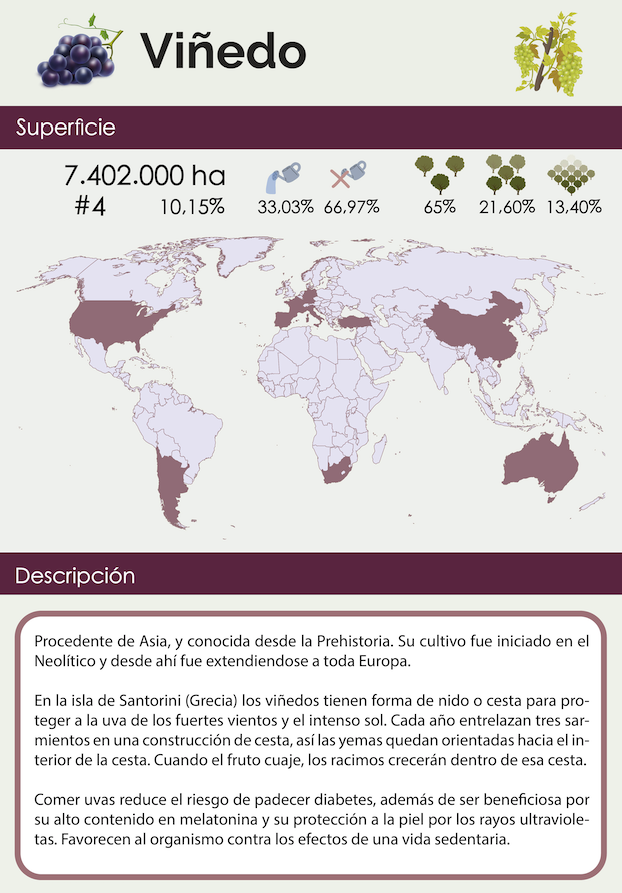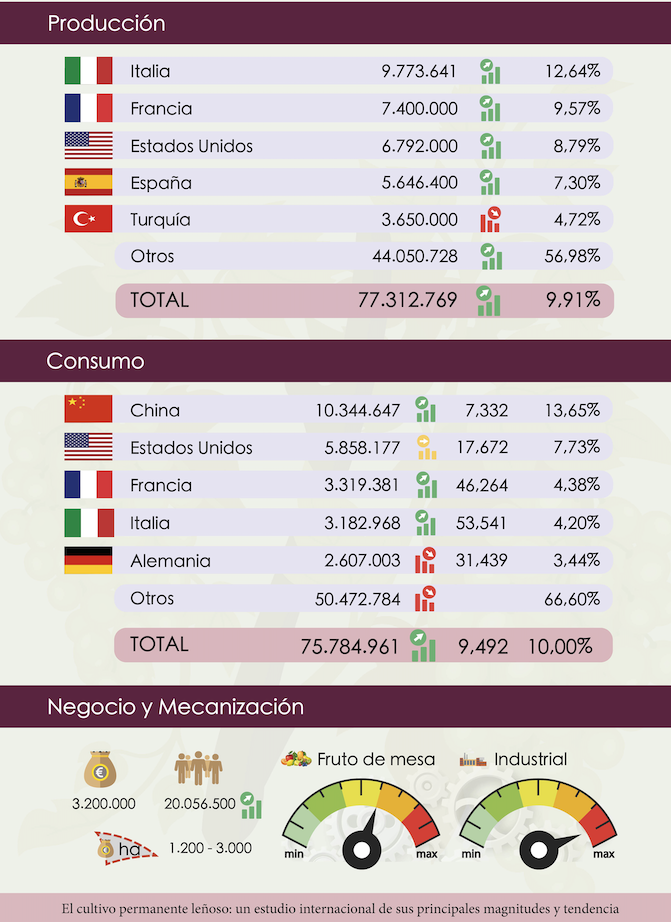It comes from Asia and has been known since prehistoric times. Its cultivation began in the Neolithic and from there it spread throughout Europe, being cultivated in some of the oldest and most fruitful civilizations in history, Greeks, Romans and ancient Egypt.
Since ancient times, grapes have been attributed to the symbolism of fertility, love and motherhood. It is the symbol of the transformation of divinity in the human being. Along with bread, wine is one of the most important elements for many religions such as Catholic, Greek or Roman. For this reason, it has a great importance in the celebration of their sacred acts. In all the sacred places where religious acts were celebrated, there were grape plantations to make wine. This has been captured in numerous works of art over the years. Grapes are an ancient fruit, praised in the world history of art.
In Egypt, references to winemaking were found in the paintings of the Valley of the Queens. The reality is that wine, as well as olive oil, were essential in the diet of ancient civilizations, and therefore the presence throughout our history.
Roman culture not only has numerous sculptures of gods related to wine, such as the sculpture of «Hermes with the child Dionysus», but there are also numerous vessels with images of the wine making process. The genius Michelangelo sculpted «The Drunken Bacchus», a sculpture that presents a voluminous glass of wine and bunches of grapes. Velázquez, Caravaggio, Goya and Rubens, among others, are artists who also wanted to praise and magnify the qualities of grapes and the grandeur of a good wine in works such as «The Grape Harvest», «Sick Bacchus» or «The Triumph of Bacchus».
The world has 7,402,000 hectares of vineyards, ranking fourth in terms of area under permanent woody crops. Italy is the country with the highest production with 9,773,641 tons and China the country with the highest consumption with 10,344,647 tons of its fruit and its use, with an upward trend in both activities.
It generates a volume of employment of 20,056,500 jobs per year.
The consumption of grapes reduces the risk of diabetes, as well as being beneficial due to its high melatonin content and its protection of the skin from ultraviolet rays. Grapes help the body against the effects of a sedentary life.



